Global warming
Regional Warming
We must consider the temperature change of different regions to assess global warming danger.
The NASA map of the trend of summer warming for the past decade shows fastest warming over a third the US below the Great Lakes, Canada permafrost, Eastern Europe and Russia (high food production) and a huge region of Siberian permafrost
Arctic warming
The most important region by far is the Arctic - because of all the carbon the Arctic holds, till now safely cold and frozen. In the case of the Arctic the temperature increase has not stalled- it has gone on increasing at a rapid rate. Now the Arctic is warming 3X the global average. That means increasing Arctic methane emissions, and also CO2 and nitrous oxide. This increased warming of the Arctic is what matters most because it can lead to the planetary catastrophe of GHG feedback rapid global warming and runaway climate change.
We must consider the temperature change of different regions to assess global warming danger.
The NASA map of the trend of summer warming for the past decade shows fastest warming over a third the US below the Great Lakes, Canada permafrost, Eastern Europe and Russia (high food production) and a huge region of Siberian permafrost
Arctic warming
The most important region by far is the Arctic - because of all the carbon the Arctic holds, till now safely cold and frozen. In the case of the Arctic the temperature increase has not stalled- it has gone on increasing at a rapid rate. Now the Arctic is warming 3X the global average. That means increasing Arctic methane emissions, and also CO2 and nitrous oxide. This increased warming of the Arctic is what matters most because it can lead to the planetary catastrophe of GHG feedback rapid global warming and runaway climate change.
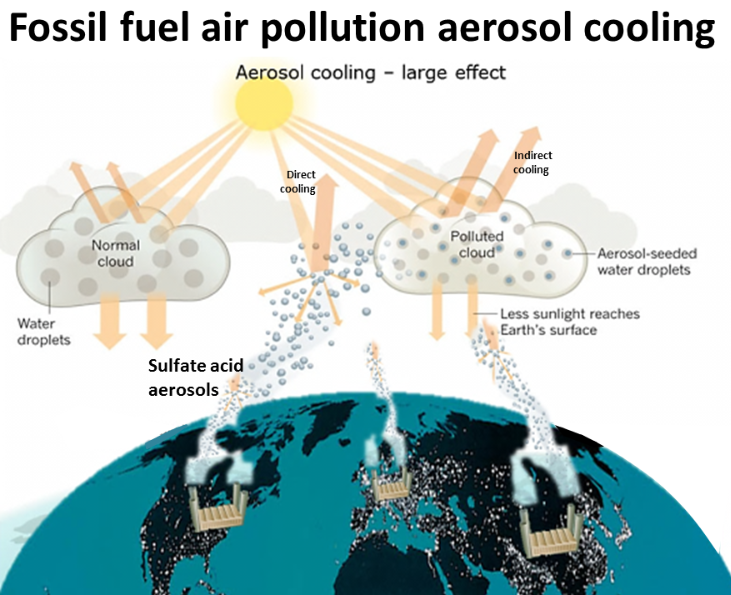
RADIATIVE FORCING (total heat in the climate system) correlates directly with the total increase in atmospheric GHGs. The NOAA converts the two into a GHG Index which provides a measure of the increase in GHG heat in the whole climate system. It is the best single index of global climate change to use.
CLIMATE EMERGENCY INSTITUTE
GLOBAL WARMING IS ACCELERATING
As predicted decades ago the nothern hemisphere is warming faster than the southern (which has more ocean) and the Arctic is warming fastest of all (Arctic amplification).
Extreme rapid Arctic warming is a planetary emergency because the largest sources of carbon which will be released by more with warming - are in the Arctic, like permafrost.
Rapid warming of Europe and N. America is a planetary emergency- the world's best food producing regions, where heat waves and drought are increasing.
As predicted decades ago the nothern hemisphere is warming faster than the southern (which has more ocean) and the Arctic is warming fastest of all (Arctic amplification).
Extreme rapid Arctic warming is a planetary emergency because the largest sources of carbon which will be released by more with warming - are in the Arctic, like permafrost.
Rapid warming of Europe and N. America is a planetary emergency- the world's best food producing regions, where heat waves and drought are increasing.
- Warming of the climate system is unequivocal
- Human influence on the climate system is clear
- Recent climate changes have had widespread impacts on human and natural systems.
IPCC AR5 2014 Headline Statements
Global warming is the increase in global average (land-sea) surface temperature, as one of the consequences of radiative (heat) forcing caused by anthropogenic (human sourced) greenhouse emissions (from IPCC 2014).
June 1988 New York Times
Global Warming Has Begun,
Expert Tells Senate
Global Warming Has Begun,
Expert Tells Senate
Dr James Holdren says global warming is poorly descriptive, and uses the term global climate disruption
There was never any question in the science that emissions of greenhouse gases would cause global surface warming, increasing with the amount and duration of emissions. The very atomic structure of GHG molecules (dipole) determines that as fact. Since the first IPCC assessment in 1990 that has been certain.
'We are certain of the following:
• there is a natural greenhouse effect which already keeps the Earth warmer than it would otherwise be
• emissions resulting from human activities are substantially increasing the atmospheric concentrations of the greenhouse gases carbon dioxide, methane, chlorofluorocarbons (CFCs) and nitrous oxide These increases will enhance the greenhouse effect, resulting on average in an additional warming of the Earth's surface The main greenhouse gas, water vapour, will increase in response to global warming and further enhance it' (IPCC 1990 1st Assessment WG1 Science Executive Summary).
Ocean heat: global warming says nothing about the >90% of GHG heat that goes to ocean warming. The heat in the oceans is a commitment to higher degrees of future global warming, even with rapid reductions of emissions.
Acid aerosol global cooling: Global warming is reduced by fossil fuel air pollution acid aerosol cooling. This is also a commitment to increased future global warming because industrial fossil fuel emissions have to be stopped to stabilize the climate- and ocean acidifcation.
Amplifying feedback emissions: global surface warming will (and is) cause additional feedback emissions from the warming planet surface. That is an extra global warming commitment resulting from the above two commitments. The obvious example of an amplifying feedback is the increased forest fires.
'We are certain of the following:
• there is a natural greenhouse effect which already keeps the Earth warmer than it would otherwise be
• emissions resulting from human activities are substantially increasing the atmospheric concentrations of the greenhouse gases carbon dioxide, methane, chlorofluorocarbons (CFCs) and nitrous oxide These increases will enhance the greenhouse effect, resulting on average in an additional warming of the Earth's surface The main greenhouse gas, water vapour, will increase in response to global warming and further enhance it' (IPCC 1990 1st Assessment WG1 Science Executive Summary).
Ocean heat: global warming says nothing about the >90% of GHG heat that goes to ocean warming. The heat in the oceans is a commitment to higher degrees of future global warming, even with rapid reductions of emissions.
Acid aerosol global cooling: Global warming is reduced by fossil fuel air pollution acid aerosol cooling. This is also a commitment to increased future global warming because industrial fossil fuel emissions have to be stopped to stabilize the climate- and ocean acidifcation.
Amplifying feedback emissions: global surface warming will (and is) cause additional feedback emissions from the warming planet surface. That is an extra global warming commitment resulting from the above two commitments. The obvious example of an amplifying feedback is the increased forest fires.

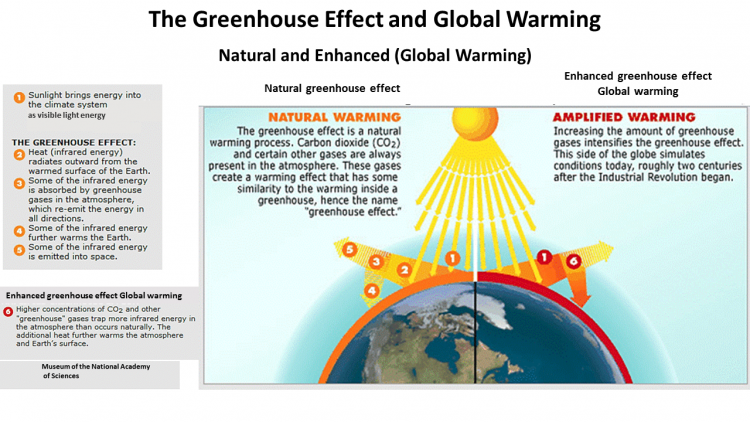
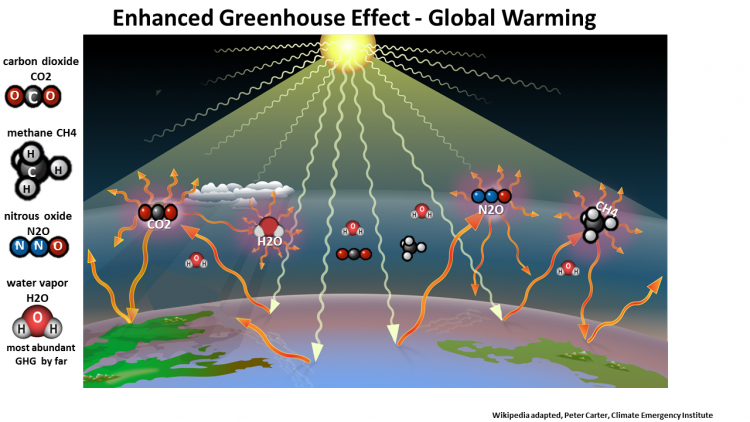
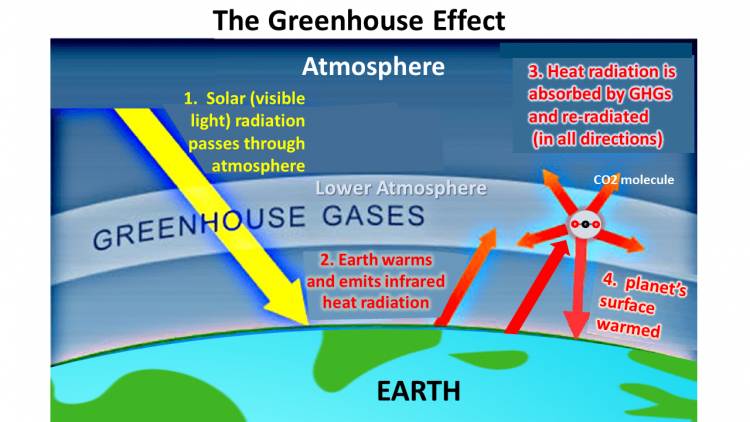
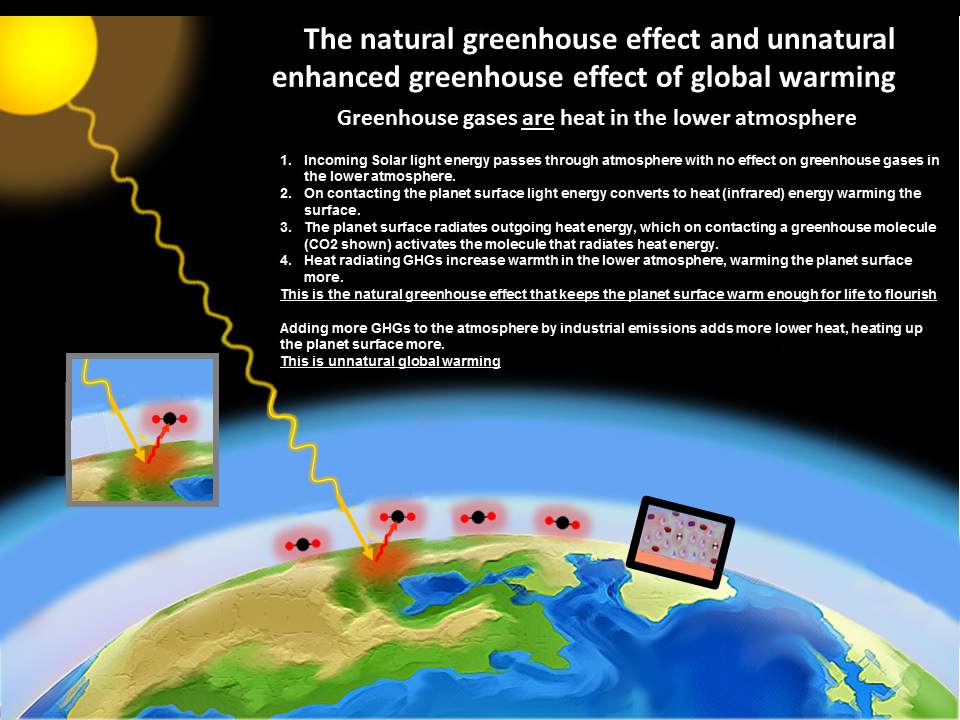
Double click here to edit this text.